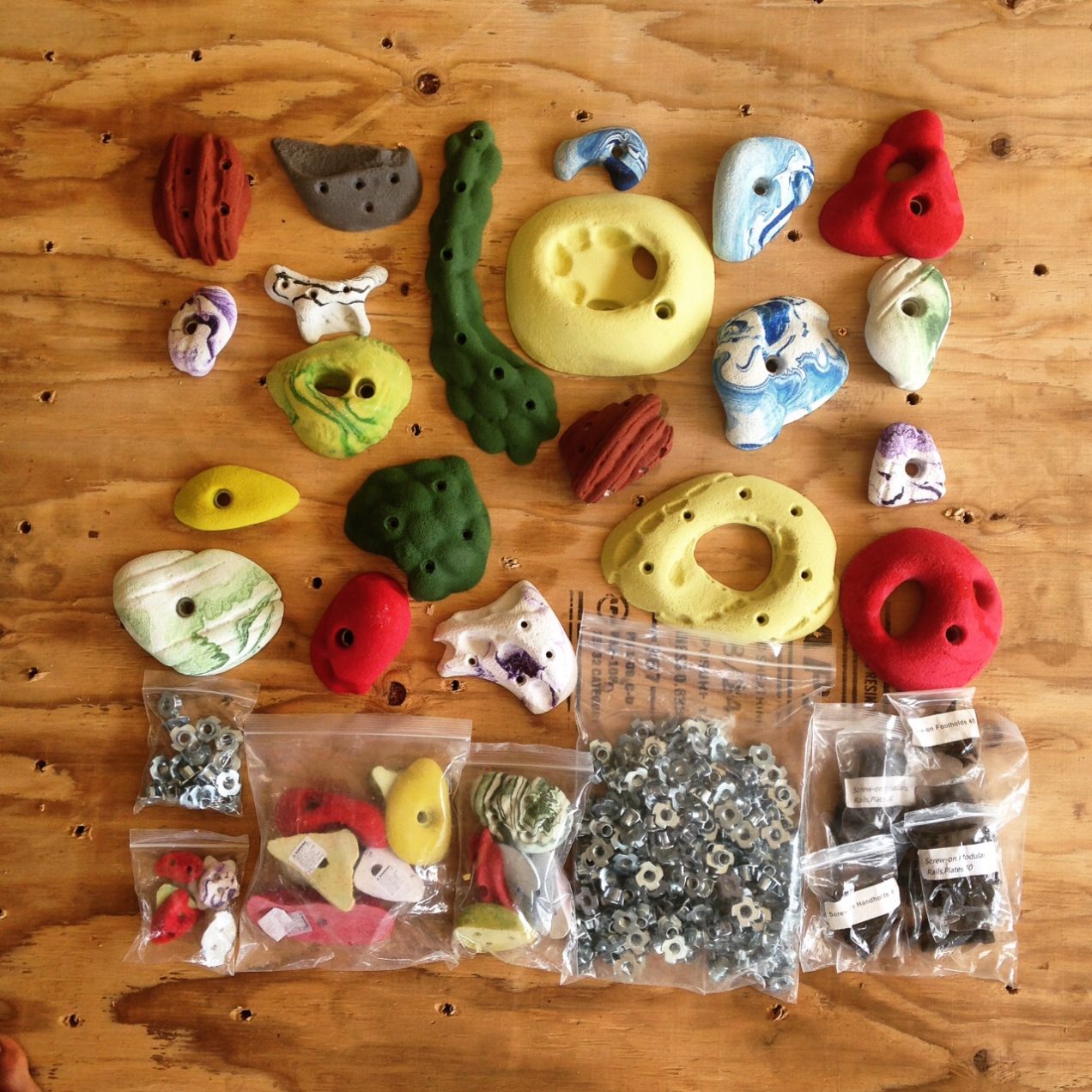When I moved to Maui three years ago I didn’t think there was any rock climbing on the island. The volcanic rock I encountered was either black, sharp and brittle, or red, crumbly and sandy. And there were definitely no climbing gyms to be found.
Of course, as someone who grew up in the midwest, what the hell did I know about rock formations? It turns out there is at least one crag with some pretty good routes, more to be developed, and some decent bouldering as well. But before I would find those, I came across a makeshift bouldering gym in a warehouse, built and frequented by a diverse group of fun, welcoming, generous people.

Maui’s bouldering gym. Which is sadly, no longer standing.
I was beyond excited to find this spot. I had tried bouldering a few times in Chicago, but had to stop when moving to Maui. So as soon as I started again I was all in. Instantly I was like a kid again, climbing trees, grabbing holds, shifting my balance and body in weird ways, jumping, falling, rolling.
I love the physical dexterity, visual-spatial reasoning, the creativity involved in the sport. And the collaborative atmosphere is great. No matter your fitness or skill level, everyone at the “gym” gets excited for you when you finally finished a route you’ve been working on. It reminds me a lot of skateboarding. You’re working on a problem (or trick) as an individual, wrestling with the strategy and execution on your own, failing repeatedly until finally you make it. It’s immensely satisfying. And everyone knows that feeling of finally sending a route, so when you finally make it they’re as excited as you are. And when you see someone finally finish a project they’re working on you feel it too.
One of the first things that struck me when beginning to climb was just how weak my grip strength was. For most of us, long before any other part of you is tired, your fingers and hands give out. You simply can’t squeeze and grab on to the holds you need to finish a route.
I immediately wanted to train my grip strength, partially so I can climb harder routes, but mainly, just so I can climb longer. Frankly, I want to climb every day, and do it for as long as possible. So in service of that goal, I decided to build an adjustable bouldering wall in our carport.
I decided to use two sheets of plywood, set vertically against the wall, with about a 12 inch gap between them. Most of the time they stand up flat against the wall, secured to some eye rings. Then to make it a little harder, they can be unscrewed and then lay against a cross-beam, creating about a 20 degree overhang.

The first set of climbing holds (Metolious), Rough dimensions for the structure, and the two panels in place against the wall.

One Panel lowered, with crash pads

Both bouldering panels lowered to 20 degrees
I can lower one or both of the panels if I like, and there are some holds screwed into the cross-beam that they rest on, so there are plenty of little routes I can do. None are too long, but it’s great for keeping the hands active between climbing sessions at the gym or outside. And when the panels are flat against the wall it takes up almost no room.
The whole project cost about $300. About $150 for lumber and some fasteners (Maui prices…), and another $150 for two sets of holds and T-nuts. Which is a little pricy, but not too bad when you compare it to what you’d pay for a couple months of a gym membership or yoga classes or a single surfboard.
One of the great thing about bouldering is that once you have something to climb you don’t need much equipment. I got some crash pads, but you could easily use an old mattress for padding. And you don’t need ropes or a harness. As some people on Maui have taught me, you don’t even need shoes, though most people prefer them. For someone who sweats as much as I do, chalk is a must, though.

